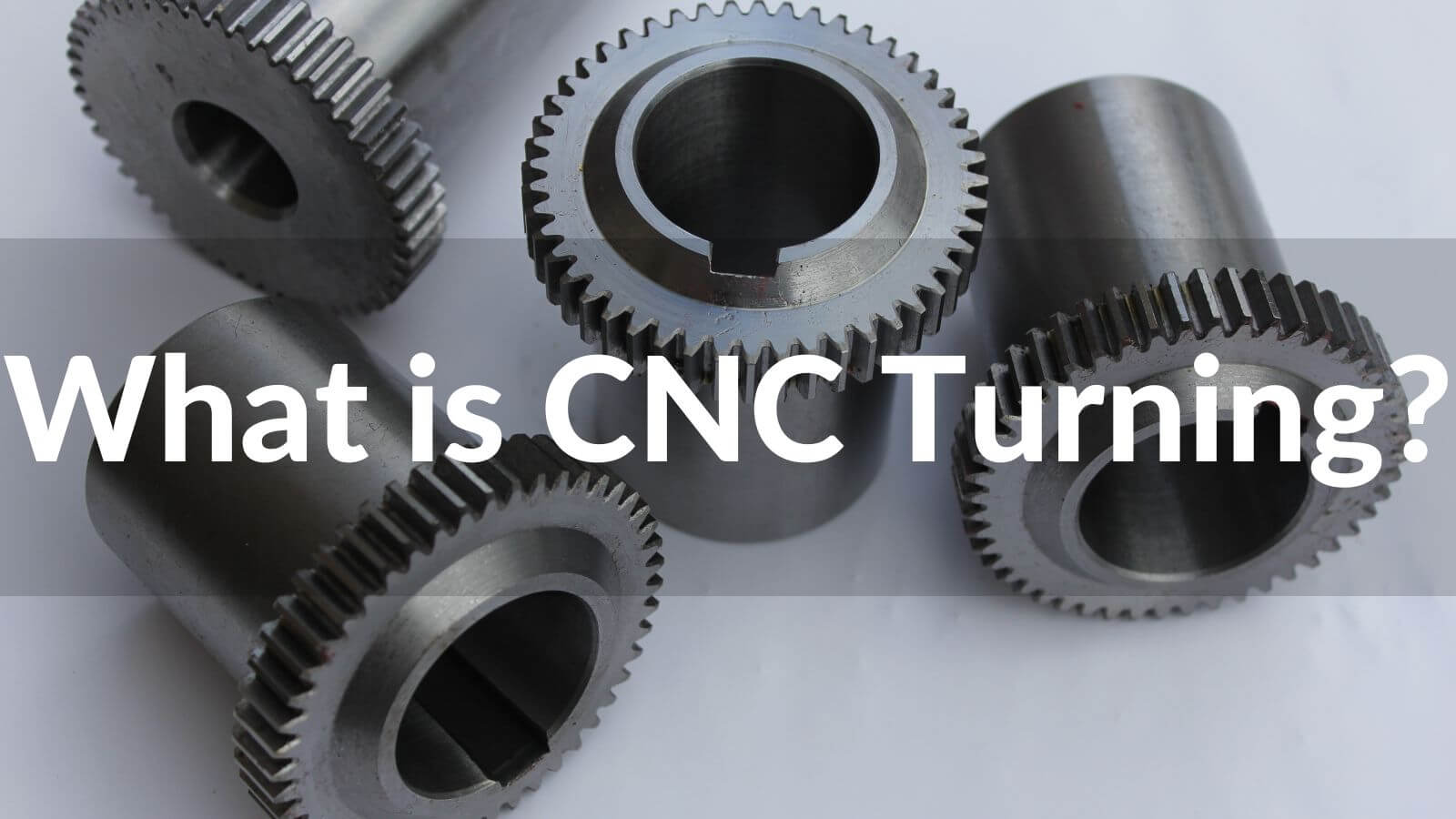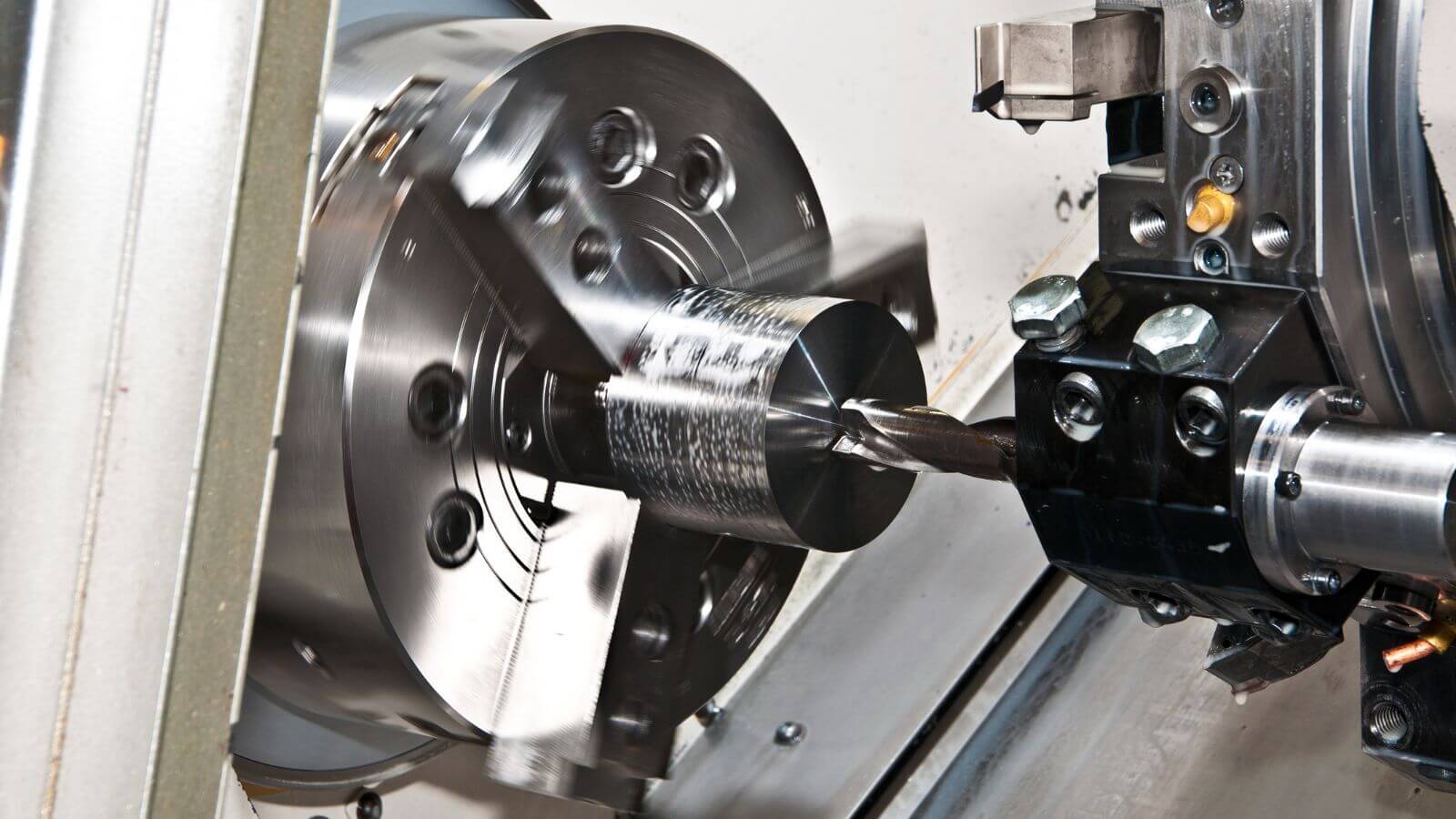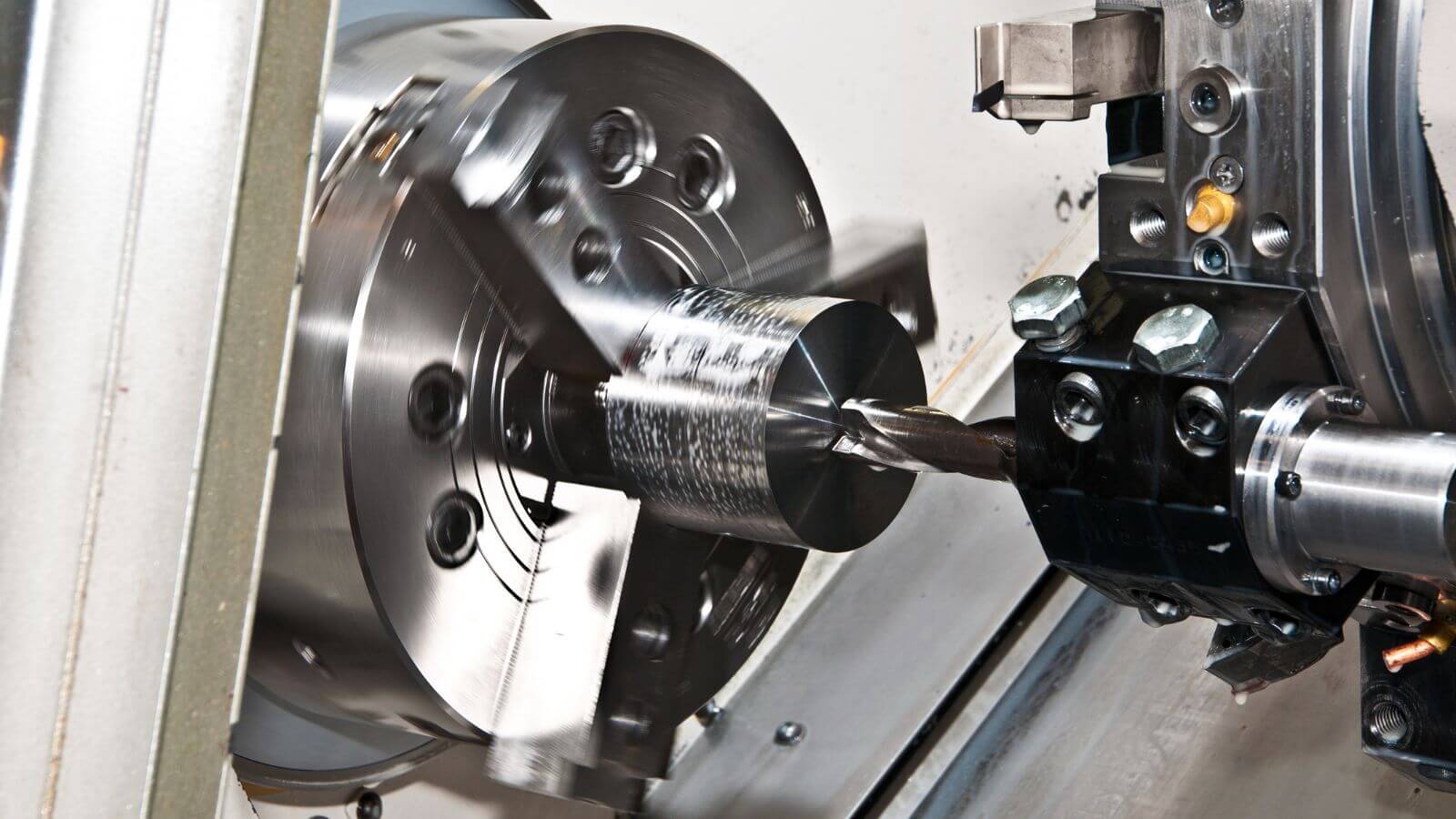CNC Machining
200 sets high precision CNC machine, covering turning, drilling, milling, broaching,grinding, wire EDM etc. all machining process.Machined prototypes and production parts in as fast as 1-3 days

In the world of manufacturing, precision and efficiency are crucial factors for success. CNC (Computer Numerical Control) Turning is a cutting-edge technology that has revolutionized the way we create intricate and precise components for various industries. By leveraging the power of automation and computer control, CNC Turning has paved the way for increased productivity and superior quality in the field of machining.
CNC Machine: At the heart of CNC Turning is the CNC machine itself. These machines are equipped with computerized controls that precisely govern the movement of the cutting tools and workpiece. CNC machines come in various types, such as lathes, mills, and multi-axis machines, each optimized for specific turning operations.
Workpiece: The workpiece refers to the raw material that undergoes the turning process. It can be made from different materials, including metals, plastics, or composites, depending on the desired application and requirements. The workpiece is securely held in place by a chuck or collet, allowing it to rotate while the cutting tools shape it.
Cutting Tools: Cutting tools are the instrumental components that remove material from the workpiece during the turning operation. These tools can be made of high-speed steel (HSS), carbide, or other durable materials. Different types of cutting tools, such as inserts, drills, and boring bars, are used depending on the specific machining requirements.
Computerized Controls: The computerized controls, often referred to as the CNC controller, play a pivotal role in CNC Turning. These controls interpret the instructions from the programmed code and translate them into precise movements of the machine's axes and cutting tools. The controls ensure that the turning operation follows the predetermined path with accuracy and consistency.
CNC Lathe: The CNC lathe is the most widely used machine for CNC Turning. It rotates the workpiece on a horizontal or vertical axis while the cutting tools shape it. CNC lathes are versatile and capable of producing a wide range of cylindrical components with exceptional precision.
Multi-axis Machines: Multi-axis CNC machines have the ability to perform turning operations on multiple axes simultaneously. By incorporating additional axes, such as the Y-axis and live tooling, these machines can execute complex geometries and produce intricate components in a single setup.
Swiss-type Lathe: Swiss-type lathes excel in precision and high-volume production. They feature a sliding headstock and guide bushing, allowing for the machining of long, slender components with excellent accuracy. Swiss-type lathes are commonly used in industries such as medical, aerospace, and electronics.
Advantages of CNC Turning
Enhanced Precision: CNC Turning eliminates the variations and inconsistencies that may arise from manual operation. The computerized controls ensure precise movements, resulting in components with tight tolerances and consistent quality.
Increased Efficiency: Automation and the ability to program multiple operations enable CNC Turning to achieve higher production rates. By reducing manual intervention, setup times are minimized, and the machining process becomes more streamlined and efficient.
Complex Geometries: CNC Turning machines can effortlessly create intricate geometries, including threads, grooves, and contours. The versatility of these machines allows for the production of complex components that would be challenging or impossible to achieve with traditional turning methods.
2. CNC Lathes vs. CNC Turning Centers

In the realm of CNC Turning, two terms that often surface are "CNC lathes" and "CNC turning centers." While both machines serve the purpose of CNC Turning, there are notable differences between them.
Primary Function: CNC lathes are primarily designed for the machining of cylindrical components. They excel at turning operations, where the workpiece rotates while the cutting tools shape it. CNC lathes are ideal for producing shafts, rods, and other cylindrical parts.
Configuration: CNC lathes often feature a horizontal orientation, with the workpiece mounted on a spindle parallel to the ground. However, vertical CNC lathes, where the spindle is positioned vertically, are also available for specific applications. The choice of configuration depends on factors such as the size and complexity of the components being produced.
Axis Movement: CNC lathes typically have two main axes: the X-axis, which controls the horizontal movement of the cutting tools, and the Z-axis, which governs the longitudinal movement along the workpiece. Some advanced CNC lathes may incorporate additional axes, such as the C-axis for spindle indexing or the Y-axis for off-center machining.
Tooling: CNC lathes employ a variety of cutting tools, including turning tools, boring tools, and threading tools. These tools are mounted on a tool turret or tool post, allowing for efficient tool changes during the machining process. The tooling system in CNC lathes enables a wide range of turning operations and tool configurations.
Multi-Functionality: CNC turning centers go beyond the scope of traditional turning by incorporating milling, drilling, and other machining operations. These machines offer a comprehensive solution for complex workpieces that require both turning and milling operations. By combining multiple functions, CNC turning centers streamline the manufacturing process and reduce the need for separate machines.
Axis Movement: CNC turning centers typically have three main axes: the X-axis for horizontal movement, the Y-axis for vertical movement, and the Z-axis for longitudinal movement. Some advanced models may incorporate additional axes, such as the B-axis for angular positioning or the C-axis for spindle indexing.
Tooling: CNC turning centers are equipped with a tool turret or tool magazine that can hold a vast array of cutting tools. This allows for automatic tool changes and the ability to perform various operations without manual intervention. The tooling system in CNC turning centers supports turning, milling, drilling, and other tool configurations, offering versatility and flexibility.
Complex Machining: With the combined turning and milling capabilities, CNC turning centers excel in the production of complex workpieces. They can efficiently machine features such as pockets, holes, and complex contours, eliminating the need for secondary operations on separate machines. CNC turning centers are particularly beneficial in industries that require intricate components, such as aerospace, automotive, and medical.
Choosing Between CNC Lathes and CNC Turning Centers
When deciding between CNC lathes and CNC turning centers, several factors come into play. Consider the following:
Component Complexity: If the components you produce primarily involve turning operations and have straightforward geometries, a CNC lathe may suffice. However, for complex workpieces that require milling, drilling, or multi-functionality, a CNC turning center would be a more suitable choice.
Production Volume: The required production volume is another crucial aspect. CNC lathes are often preferred for high-volume production runs, as they offer efficient turning operations. CNC turning centers, with their multifunctionality, are better suited for lower-volume, highly complex parts that require multiple operations.
Space and Budget Constraints: CNC turning centers generally have a larger footprint and come with a higher price tag compared to CNC lathes. Consider your available space and budgetary constraints when making a decision.
3. CNC Turning Machine Components
• Bed and Headstock
• Spindle
• Tool Turret
• Slides and Carriages
• CNC Controller
• Coolant System
• Chip Conveyor
• Control Panel
• Safety Features

| High-Speed Steel (HSS) | High-Speed Steel (HSS) is a traditional tooling material widely used in CNC Turning. It is a general-purpose tool steel alloyed with elements such as tungsten, molybdenum, and cobalt to enhance its hardness and wear resistance. |
|---|---|
| Carbide | Carbide tools are highly popular in CNC Turning due to their excellent performance and durability. Carbide is a composite material composed of tungsten carbide particles embedded in a cobalt binder matrix. The hardness and wear resistance of carbide make it ideal for machining hard materials, such as stainless steel, alloy steels, and cast iron. |
| Ceramics | Ceramic tooling materials have gained recognition for their exceptional hardness, heat resistance, and chemical stability. They are typically made of materials like alumina (Al2O3) or silicon nitride (Si3N4). Ceramic tools excel in high-speed machining of hardened steels, heat-resistant alloys, and superalloys. They offer superior wear resistance and can withstand extreme cutting temperatures. |
| Cubic Boron Nitride (CBN) | Cubic Boron Nitride (CBN) is a synthetic material known for its exceptional hardness and thermal stability. CBN tools are predominantly used for machining hardened steels, cast irons, and superalloys. They can withstand high cutting temperatures and provide excellent tool life, making them suitable for continuous and interrupted cutting operations. |
| Polycrystalline Diamond (PCD) | Polycrystalline Diamond (PCD) is a cutting-edge tooling material that offers unparalleled hardness and abrasion resistance. PCD tools consist of a layer of diamond particles sintered onto a carbide substrate. They excel in machining non-ferrous materials, such as aluminum, copper, and composites. PCD tools provide exceptional tool life, reduced machining forces, and high surface finish quality. |
| Facing | Facing is a basic CNC Turning operation used to create a flat surface on the end or face of a workpiece. The cutting tool moves perpendicular to the workpiece's rotational axis, removing material and producing a smooth, flat surface. Facing is often employed to ensure workpiece parallelism, improve surface finish, or prepare the workpiece for subsequent operations. |
|---|---|
| Turning | Turning is the primary operation in CNC Turning, where the workpiece rotates while the cutting tool removes material to create cylindrical shapes. It involves removing material from the external diameter of the workpiece to achieve the desired dimensions and surface finish. Turning is commonly used to produce shafts, rods, and other cylindrical components. |
| Taper Turning | Taper turning is a CNC Turning operation used to create tapered surfaces on the workpiece. It involves adjusting the tool position relative to the rotational axis to gradually change the diameter of the turned section. Taper turning is commonly used for creating conical shapes, such as machine tool tapers, pipe fittings, and valve seats. |
| Grooving | Grooving is a CNC Turning operation that involves cutting narrow, defined grooves into the workpiece. The grooves can serve various purposes, such as accommodating O-rings, providing clearance for snap rings, or creating decorative features. Grooving tools are designed to create precise and consistent grooves with different profiles, depths, and widths. |
| Thread Cutting | Thread cutting is the process of producing threads on the workpiece, allowing for the assembly of threaded fasteners or the mating of components. CNC Turning machines can perform thread cutting operations using specialized tools, such as threading inserts or taps. Thread cutting can be done for both internal (tapping) and external (turning) threads. |
| Boring | Boring is a CNC Turning operation used to enlarge existing holes or create internal cylindrical features with high precision. Boring tools remove material from the inner diameter of the workpiece, ensuring concentricity and dimensional accuracy. This operation is often used to achieve precise internal diameters, such as in engine cylinders or bearing housings. |
| Knurling | Knurling is a CNC Turning operation used to create a textured pattern on the surface of the workpiece. It involves pressing a knurling tool against the workpiece while it rotates, resulting in a raised diamond-shaped or straight-line pattern. Knurling enhances the grip or aesthetic appearance of parts, commonly seen on handles, knobs, or decorative elements. |
| Parting | Parting, also known as cutoff, is the process of separating the workpiece into individual parts. It involves cutting through the workpiece using a specialized parting tool. Parting is commonly used to separate components from a larger stock or to create multiple parts from a single workpiece. |
6. Advantages of CNC Turning
CNC Turning, a highly precise and efficient machining process, offers numerous advantages over conventional turning methods. With the aid of computer numerical control (CNC) technology, CNC Turning machines provide enhanced capabilities and benefits that contribute to improved productivity and quality.
1. High Precision
CNC Turning machines are renowned for their exceptional precision and accuracy. The computer-controlled operation ensures consistent and repeatable results, eliminating the inconsistencies that can occur with manual turning methods. CNC Turning machines can achieve tight tolerances and produce intricate geometries with ease, resulting in precise workpiece dimensions and surface finishes.
2. Increased Productivity
One of the significant advantages of CNC Turning is its ability to significantly enhance productivity. CNC machines can operate continuously without the need for constant human intervention, enabling round-the-clock production. Additionally, CNC Turning machines offer rapid tool changes, reduced setup times, and simultaneous multi-axis machining capabilities, resulting in shorter cycle times and increased output.
3. Versatility
CNC Turning machines are highly versatile and can handle a wide range of materials, from soft metals to hard alloys. They can accommodate different workpiece sizes and shapes, allowing for flexibility in manufacturing various components. CNC Turning machines can perform multiple operations, such as turning, threading, grooving, and drilling, in a single setup, eliminating the need for additional machines or manual processes.
4. Consistency and Repeatability
With CNC Turning, the machining process is precisely controlled by computer programs, ensuring consistent and repeatable results. Once a program is developed and verified, it can be used to produce identical parts repeatedly, without any deviations caused by human error or fatigue. This consistency is crucial for maintaining product quality and meeting strict manufacturing requirements.
5. Complex Geometry and Design Flexibility
CNC Turning machines excel at machining complex geometries and intricate designs. The ability to program the machine with precise tool paths enables the production of intricate contours, fine details, and complex features that may be challenging or impossible to achieve with manual turning methods. This opens up possibilities for innovative and intricate component designs.
If you want to know more, please contact us!